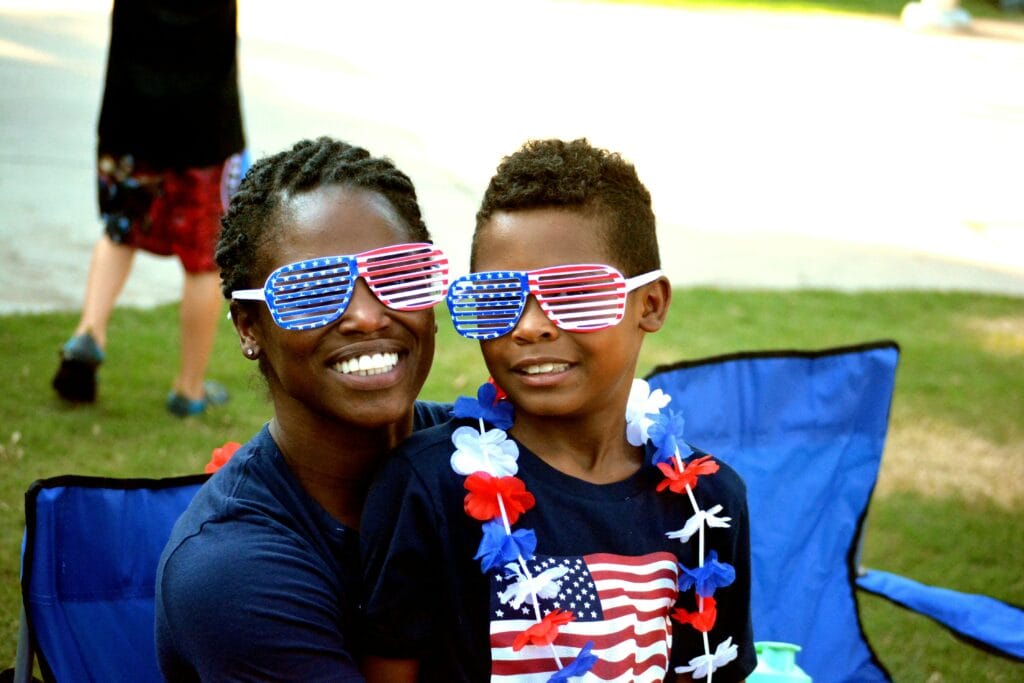*This article contains affiliate links*
For many Americans, the 4th of July means fireworks, barbecues, and all things red, white, and blue. Here in the UK, the date tends to pass with little more than a raised eyebrow and perhaps a meme or two about “losing the colonies.” Still, this date offers a brilliant opportunity to talk to children about history, cultural differences, and international traditions in a fun and engaging way.
So how do we approach Independence Day for kids in a UK household? Whether you’re an expat family, have American relatives, or simply love the idea of using global celebrations as learning moments, there are plenty of fun and educational ways to get involved – without needing a passport.

What Is Independence Day Anyway?
For the uninitiated, 4th July marks the date in 1776 when the United States declared independence from British rule. It’s a day celebrated across America with patriotic parades, backyard cookouts, concerts, and enormous fireworks displays. In short, it’s a full-on, star-spangled celebration of freedom.
For British families, this is a great chance to explain the context of the day – a bite-sized history lesson served with a side of hot dogs. You don’t need to go full Revolution re-enactment (though if you do, please send photos), but chatting about how different countries gained independence and why it matters is a valuable starting point.
A Tale of Two Traditions
While Americans are firing up the grill and waving flags, what are we Brits up to? Well, probably arguing about the weather and wondering why strawberries cost £3.99 a punnet. We don’t really have a national celebration quite like Independence Day, which makes comparing the two cultures even more interesting.
You can use this as a family talking point. Ask your children:
- What does it mean to be proud of your country?
- How do we celebrate our national identity in the UK?
- Should we have a similar day to reflect on our history?
It’s not about nationalism – it’s about learning how different countries choose to honour their past.
How to Celebrate Independence Day for Kids in the UK

Even if you’re not American, celebrating Independence Day for kids can be a fun cultural exploration. Here are a few ways to get involved at home:
1. American-Style BBQ
Get the kids involved in planning an American-inspired menu: think burgers, corn on the cob, s’mores, and homemade lemonade. Let them help prepare the food, set up a picnic in the garden, and serve up a mini feast. Talk about the tradition of cookouts and how food plays a big part in family gatherings.
2. DIY Fireworks Crafts
If fireworks aren’t happening locally, make your own versions using craft supplies. Glitter glue, paint splatter techniques, or toilet roll tube ‘fireworks’ are fun and mess-friendly options. You can even stick them on a big black poster to make a family art display.
3. Red, White, and Blue Games
Set up games with a colour theme – scavenger hunts for red, white, and blue items, relay races with American flags, or even a mini “Fourth of July Olympics” in the garden. It’s a great way to burn off energy and get into the spirit of celebration.
4. Story Time: History for Little Ones
Choose age-appropriate books or YouTube videos explaining American Independence Day. You might also explore stories from other countries about how they celebrate their national days. It’s a fantastic way to broaden horizons and help kids understand that not everyone’s summer holiday looks the same.
5. Compare National Symbols
Use the day to explore flags, anthems, and national symbols. Draw the UK and US flags, learn about the bald eagle versus the lion, or compare famous landmarks. It’s a fun geography-meets-art-meets-history mashup, perfect for curious little minds.
Making Cultural Curiosity Fun

You don’t need a huge budget or a background in diplomacy to make international celebrations part of your family’s summer. Just a bit of curiosity, creativity, and conversation is enough to open up new ideas and perspectives.
Teaching Independence Day for kids doesn’t mean taking sides or waving a flag that’s not yours – it means helping children understand the wider world, appreciate different histories, and become more culturally aware. And maybe enjoy a grilled hot dog or two along the way.

